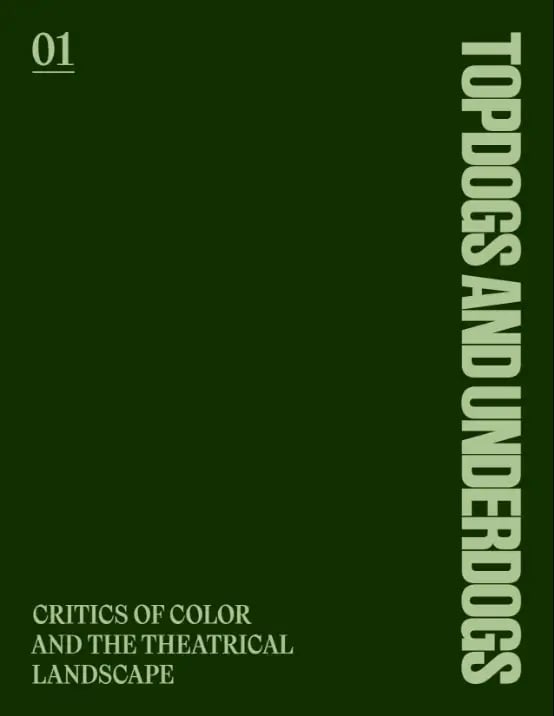ARTchivist's Notebook: Critics of Color

For over a year, I’ve been working on the report, Topdogs and Underdogs: Critics of Color and the Theatrical Landscape, and it has finally been published! Funded by Critical Minded, it’s the first study of its kind on the experiences and challenges of critics of color in the United States.
The report has two main sections. The first is a systematic review of publications — other reports, but mostly articles, blog posts, podcasts, etc. — about critics of color from the past 10 years or so. The second is a summary of 16 interviews with current theater critics of color from a variety of racial/ethnic backgrounds, located all over the U.S. and representing a wide range of career stages, from students to veteran critics. Together, the two sections provide both an expansive picture of the experiences of critics of color and a deeper dive into the specific circumstances faced by theater critics.
For the first of what we hope will be a series of reports, we decided to focus on theater critics because the theater industry as a whole has been heavily impacted by the COVID-19 pandemic. We were curious to learn what effect it had on critics. The replies we received are one of the report’s surprising findings: pandemic closures that in some cases led to the demise of theater companies, actually had little economic effect on critics of color. They were able to adapt and pivot — writing about the closures themselves, or finding different ways to cover the industry — because they were already used to cobbling together multiple sources of income to make ends meet. The ongoing cratering of traditional publications had already conditioned them to be resilient and resourceful.
While this situation is a tribute to the determination and commitment critics of color have for their craft, it is also dire news (albeit not so new) for our shared cultural discourse. Critics help us make sense of the world around us. When we don’t have a diverse chorus of voices interpreting, analyzing, and evaluating our cultural landscape, our discussions become one-dimensional, exclusive, and ripe for exploitation by those who seek to limit what can be thought and said. This report details the valuable perspectives critics of color bring to the table and the barriers they encounter to do so. It also offers some recommendations for how to better support them and foster richer and more inclusive cultural debates. It’s a project that, as an art critic, is very near and dear to my heart. I hope you’ll take a look.
If that’s a daunting task, there is a companion podcast forthcoming. Stay tuned!
I would be remiss not to mention all the folks who brought the report to life. The theater critics who gave so generously of their time and insights; my co-author, music critic and scholar Oliver Wang; Critical Minded’s executive director, rashid shabazz and the CM board; our theater critic researchers, Kelundra Smith and Steven Vargas; our research assistant Cheyenne Dixon; intrepid copyeditor Liz Brown; design studio Pacific Pacific; podcast producer Will Hagle, host Steven Vargas, and engineer Patrick Huang. It has been an honor and a joy to work with all of them, and I hope I’ll have the opportunity to do so again soon.